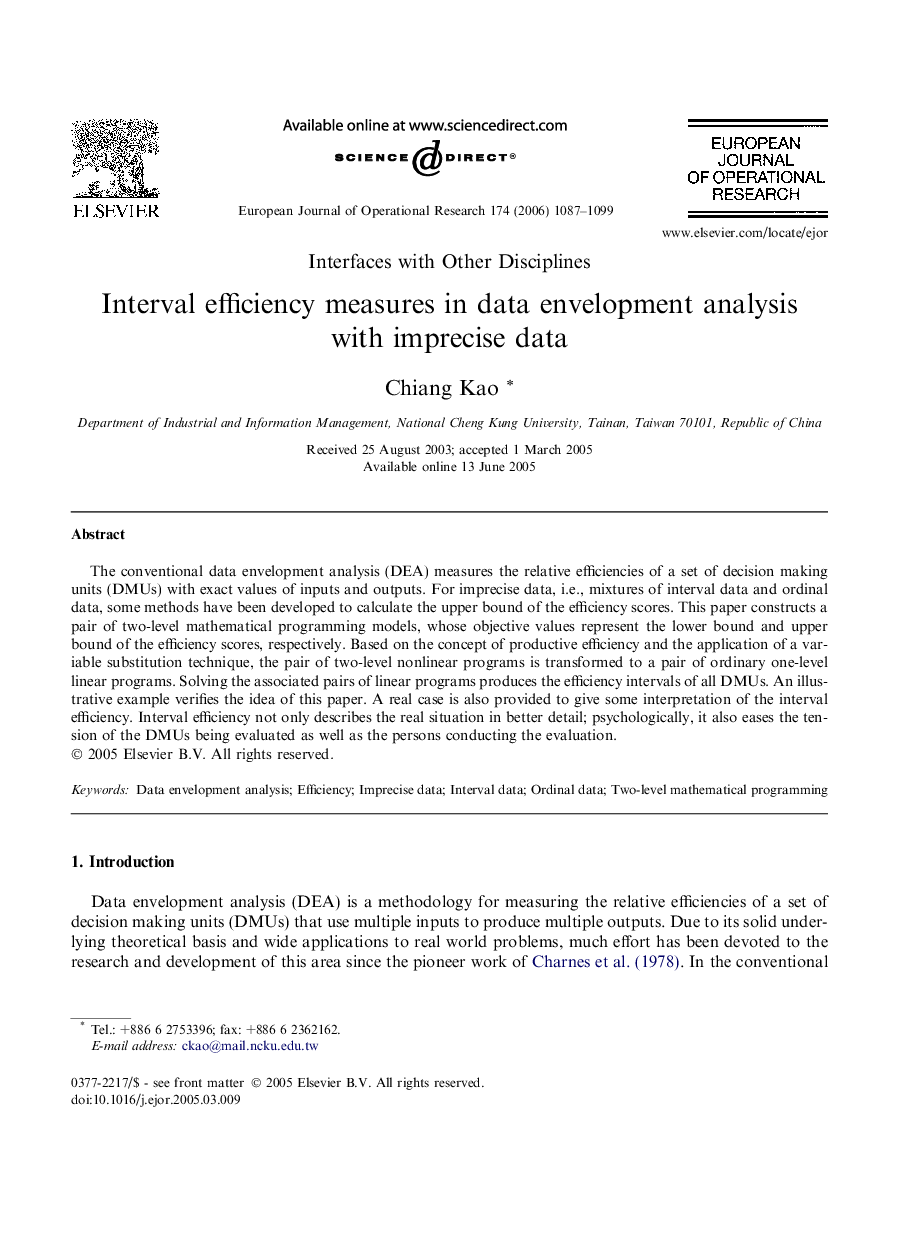| Article ID | Journal | Published Year | Pages | File Type |
|---|---|---|---|---|
| 482478 | European Journal of Operational Research | 2006 | 13 Pages |
The conventional data envelopment analysis (DEA) measures the relative efficiencies of a set of decision making units (DMUs) with exact values of inputs and outputs. For imprecise data, i.e., mixtures of interval data and ordinal data, some methods have been developed to calculate the upper bound of the efficiency scores. This paper constructs a pair of two-level mathematical programming models, whose objective values represent the lower bound and upper bound of the efficiency scores, respectively. Based on the concept of productive efficiency and the application of a variable substitution technique, the pair of two-level nonlinear programs is transformed to a pair of ordinary one-level linear programs. Solving the associated pairs of linear programs produces the efficiency intervals of all DMUs. An illustrative example verifies the idea of this paper. A real case is also provided to give some interpretation of the interval efficiency. Interval efficiency not only describes the real situation in better detail; psychologically, it also eases the tension of the DMUs being evaluated as well as the persons conducting the evaluation.
